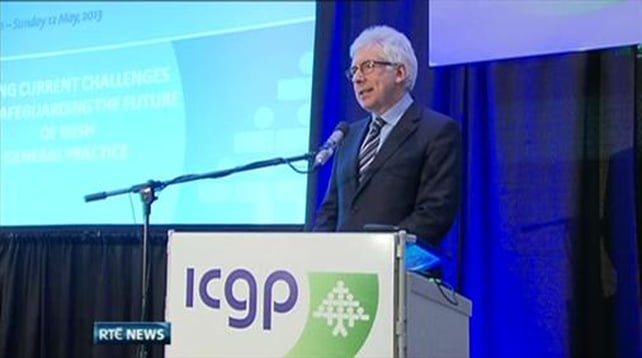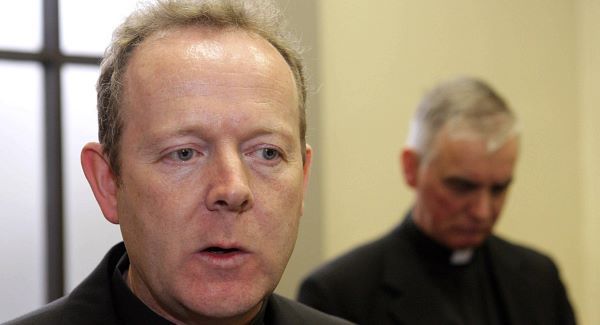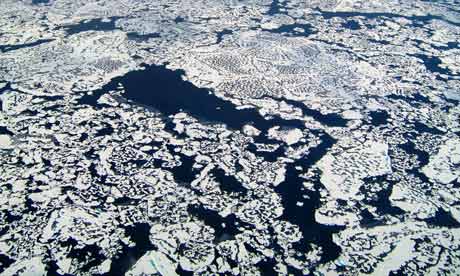Irish people’s fears over property taxes and next Budget shake our confidence


HOUSEHOLD FINANCES ARE UNDER PRESSURE DUE TO THE PROPERTY TAX AND FEARS ABOUT ANOTHER TOUGH BUDGET, A NEW SURVEY HAS FOUND.
The squeeze on household funds means consumers are also holding back from making major purchases because they do not know how many more tax hikes and charges they face.
These fears mean there was a marginal decline in the Consumer Confidence Index in April when compared with the previous month.
The overall KBC Ireland/ ESRI Consumer Sentiment Index decreased from 60.0 in March to 58.9 in April. The three-month moving average fell from 61.2 to 59.4, reflecting a slight weakening of sentiment since the start of the year.
Austin Hughes, KBC Bank Ireland, said the mood of consumers was little changed in April.
“The marginal decline in the sentiment index is disappointing when compared to a slight improvement across the rest of the euro area but it is not entirely surprising . . . following a number of indicators that point towards a still hesitant recovery,” he added.
It came as a new survey found most people were unhappy with the property tax estimate they have received from Revenue.
Valuation: And two out of every five people liable for the controversial new tax intended to use a lower valuation figure for their home than the one suggested by the tax authorities.
Revenue has insisted that the letters sent to homeowners contain its best estimate of the valuation of the property, but many people have mistaken this for a Revenue assessment.
They mistakenly believe they have to pay property tax based on the valuation in the letter from the tax officers.
A spokeswoman said the Revenue estimate was not a demand – it was only relevant where somebody did not complete and file a return.
The MyHome.ie survey of 1,500 people found that 57pc were unhappy with the valuation by Revenue. Only 22pc said they agreed with the introduction of the new tax, with 60pc opposing it.
Angela Keegan, managing director of MyHome.ie, said the fact half of property owners said they were going to use the figure in Revenue’s assessment was interesting.
“The findings would appear to support anecdotal evidence that Revenue generally erred on the lower side with their valuation bands,” Ms Keegan said.
THE IRISH STATE HAS NO RIGHT TO DESTROY HUMAN LIFE
The future head of the Catholic Church in Ireland has entered the row over abortion legislation by declaring that the State has no right to destroy life.
It comes as a Fine Gael TD backed calls for legal representation for the unborn if an abortion was being considered.
Archbishop Eamon Martin, who will be Primate of All-Ireland when the incumbent Cardinal Seán Brady retires, questioned how the planned laws were the will of the people when the protection of a mother and her child were enshrined in the Constitution.
Archbishop Martin’s comments ahead of next week’s anticipated Oireachtas hearings on the draft abortion legislation are in direct contrast to remarks made by the Taoiseach last week.
During a visit to Knock, Taoiseach Enda Kenny declared his book was the “book of the Constitution” and the Constitution was determined by the people.
But Archbishop Martin last night launched a stinging attack on the planned law.
“The right to life is such a natural and inviolable right that no individual, no majority and no state can ever create, modify or destroy it,” he said. “How can it be claimed that this is the will of the Irish people who had enshrined in the Constitution the protection of the life of both a mother and her unborn child?”
He said efforts instead of the planned legislation should go to supporting mothers with fears about pregnancies and guidelines for medical personnel.
“None of us can leave our faith ‘outside the room’ when we are considering these matters,” he said during an address in Dundalk.
His criticisms came as European Affairs Minister Lucinda Creighton said there was growing support in the Oireachtas for changes to the Protection of Life during Pregnancy Bill.
The pro-life TD said she supported calls for the unborn to be legally represented where abortion was being considered.
“That’s something that I think absolutely merits consideration. The fact there could be argument that, constitutionally, it could be required. That’s something I would like to see in the legislation,” she told RTÉ. She said she supported the idea of a “sunset clause or a mandatory review” of abortion cases after a number of years.
She also said that in every jurisdiction there was provision for “term limits” when carrying out a termination.
“I think there can be improvements. That’s my view, that’s the view of many of my colleagues in the Oireachtas.”
Meanwhile, it was confirmed yesterday that no women who have had abortions will contribute to the Oireachtas health committee’s three days of hearings which begin next Friday.
Junior Health Minister insists Government still committed to universal free GP care


The Chairman of the ICGP John Delap said GP’s were no different to other groups of people in terms of discussing and debating the issue of abortion
Earlier this week it emerged that legislation to extend GP cards to patients with long-term illnesses had run into difficulty.
The annual conference will also hear debates on abortion.
Several motions are calling on the Government to legislate for abortion in the case of rape, incest or non-viable foetal anomalies.
Chairman of the ICGP John Delap said GPs were no different to other groups of people in that they were discussing and debating the issue of abortion.
He said he did not want to pre-empt the outcome of the motions but he welcomed the clarity provided in the heads of bill.
A plan to introduce free GP care for 60,000 people with long term illnesses was meant to be in place by March 2012 but has not happened.
The plan has been delayed by what the Government says are legal problems.
Some 30,000 people take part in suicide prevention Pieta House run
‘WE WILL NOT STOP UNTIL THIS GOVERNMENT TAKES SUICIDE PREVENTION SERIOUSLY’
The founder of suicide prevention agency Pieta House told around 6,000 people in Dublin this morning that they will not stop campaigning until there is a significant decrease in Irish suicide rates.
Joan Freeman addressed the crowd in Phoenix Park shortly before the start of the fifth Darkness into Light 5km run and walk, which took place in 20 locations across the country, attracting an estimated 30,000 participants, double last year’s turnout.
Ms Freeman said the every year there is a “wave of sadness”, but that she also feels “this tidal wave of incredible hope”.
“We will not stop until we see suicide reduced every year and we will not stop until this Government takes suicide prevention seriously,” she said.
“I’m absolutely overwhelmed by the huge numbers that turned out this morning all over the country. Taking part in Darkness into Light is a really special experience and we see so many of the same people coming back to do it year after year.
“There’s a massive groundswell of support for suicide prevention in this country at the moment and I’m very keen to build on this. We’re here today to show people that there is hope and I’m determined that Pieta House will play a leading role in reducing the suicide rate in Ireland. ”
While Ms Freeman led the main event in Dublin City, Niall Quinn, Bláthnaid Ní Chofaigh, Micheál Ó Muircheartaigh, Sinead Desmond, the Dublin football team and members of the Munster rugby squad took charge at events around the country.
The event follows the release of 2012 figures from Pieta House which showed a 42 per cent increase in the number of people seeking their help for suicidal thoughts and self-harming behaviour.
The charity was contacted by 2,736 clients in 2012, up from 1,923 in 2011.
A list of regional Pieta House offices can be found on their website pieta.ie.
Carbon level hits the 400 parts & it’s a reminder that our emissions are not only continuing,
BUT THEY’RE ACCELERATING?
The old saying that “what goes up must come down” doesn’t apply to carbon dioxide pollution in the air, which just hit an unnerving milestone.
The chief greenhouse gas was measured Thursday at 400 parts per million in Hawaii, a monitoring site that sets the world’s benchmark. It’s a symbolic mark that scientists and environmentalists have been anticipating for years.
While this week’s number has garnered all sorts of attention, it is just a daily reading in the month when the chief greenhouse gas peaks in the Northern Hemisphere. It will be lower the rest of the year. This year will probably average around 396 ppm. But not for long — the trend is going up and at faster and faster rates.
Within a decade the world will never see days — even in the cleanest of places on days in the fall when greenhouse gases are at their lowest — when the carbon measurement falls below 400 ppm, said James Butler, director of global monitoring at the National Oceanic and Atmospheric Administration’s Earth Science Research Lab in Boulder, Colo.
“The 400 is a reminder that our emissions are not only continuing, but they’re accelerating; that’s a scary thing,” Butler said Saturday. “We’re stuck. We’re going to keep going up.”
Carbon dioxide stays in the air for a century, some of it into the thousands of years. And the world carbon dioxide pollution levels are accelerating yearly. Every second, the world’s smokestacks and cars pump 2.4 million pounds of the heat-trapping gas into the air.
Carbon pollution levels that used to be normal for the 20th century are fast becoming history in the 21st century.
“It means we are essentially passing one in a whole series of points of no return,” said Michael Mann, a climate scientist at Pennsylvania State University.
Princeton University climate scientist Michael Oppenheimer said the momentum in carbon dioxide emissions has the world heading toward and passing 450 ppm. That is the level which would essentially mean the world warms another 2 degrees, what scientists think of as dangerous, he said. That 2-degree mark is what much of the world’s nations have set as a goal to prevent.
“The direction we’ve seen is for blowing through the best benchmark for what’s dangerous change,” Oppenheimer said.
And to see what the future is, scientists look to the past.
The last time the worldwide carbon level probably hit 400 ppm was about 2 million years ago, said Pieter Tans of the National Oceanic and Atmospheric Administration.
That was during the Pleistocene Era. “It was much warmer than it is today,” Tans said. “There were forests in Greenland. Sea level was higher, between 33 to 66 feet.”
Other scientists say it may have been 10 million years ago that Earth last encountered this much carbon dioxide in the atmosphere. The first modern humans only appeared in Africa about 200,000 years ago.
Environmental activists, such as former Vice President Al Gore, seized on the milestone.
“This number is a reminder that for the last 150 years — and especially over the last several decades — we have been recklessly polluting the protective sheath of atmosphere that surrounds the Earth and protects the conditions that have fostered the flourishing of our civilization,” Gore said in a statement. “We are altering the composition of our atmosphere at an unprecedented rate.”
Carbon dioxide traps heat just like in a greenhouse. It accounts for three-quarters of the planet’s heat-trapping gases. There are others, such as methane, which has a shorter life span but traps heat more effectively. Both trigger temperatures to rise over time, scientists say, which is causing sea levels to rise and some weather patterns to change.
When measurements of carbon dioxide were first taken in 1958, it measured 315 ppm. Some scientists and environmental groups promote 350 ppm as a safe level for CO2, but scientists acknowledge they don’t really know what levels would stop the effects of global warming.
The level of carbon dioxide in the air is rising faster than in the past decades, despite international efforts by developed nations to curb it. On average the amount is growing by about 2 ppm per year. That’s 100 times faster than at the end of the Ice Age.
Back then, it took 7,000 years for carbon dioxide to reach 80 ppm, Tans said. Because of the burning of fossil fuels, such as oil and coal, carbon dioxide levels have gone up by that amount in just 55 years.
Before the Industrial Revolution, carbon dioxide levels were around 280 ppm, and they were closer to 200 during the Ice Age, which is when sea levels shrank and polar places went from green to icy. There are natural ups and downs of this greenhouse gas, which comes from volcanoes and decomposing plants and animals. But that’s not what has driven current levels so high, Tans said. He said the amount should be even higher, but the world’s oceans are absorbing quite a bit, keeping it out of the air.
“What we see today is 100% due to human activity,” said Tans, a NOAA senior scientist. The burning of fossil fuels, such as coal for electricity and oil for gasoline, has caused the overwhelming bulk of the man-made increase in carbon in the air, scientists say.
The world sent 38.2 billion tons of carbon dioxide into the air in 2011, according international calculations published in a scientific journal in December. China spews 10 billion tons of carbon dioxide into the air per year, leading all countries, and its emissions are growing about 10% annually. The U.S. at No. 2 is slowly cutting emissions and is down to 5.9 billion tons per year.
The speed of the change is the big worry, said Pennsylvania State’s Mann. If carbon dioxide levels go up 100 ppm over thousands or millions of years, plants and animals can adapt. But that can’t be done at the speed it is now happening.






No comments:
Post a Comment